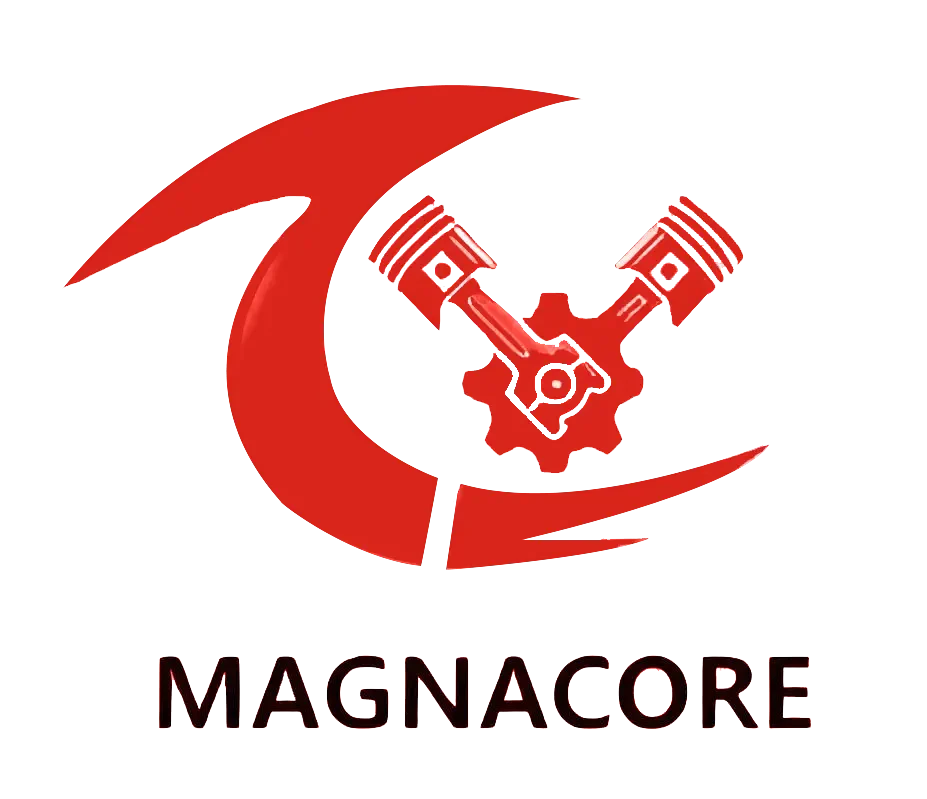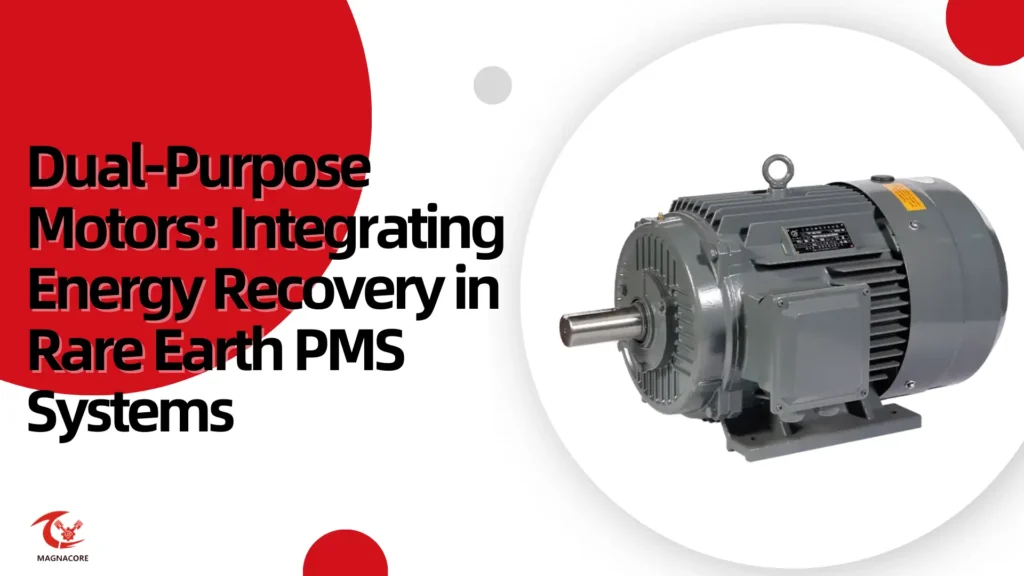In today’s fast-paced industrial landscape, efficiency and sustainability are more important than ever.
Dual-purpose motors, which combine the high performance of rare earth permanent magnet synchronous (PMS) systems with energy recovery capabilities, are emerging as a game-changing solution.
These innovative motors not only deliver exceptional power and precision but also capture and reuse energy that would otherwise be wasted.
This article explores how dual-purpose motors work, their benefits, and why they are a smart choice for modern applications.
Also Read:
- Customizing Rare Earth PMS Motors for Specific Industrial Needs
- Top Factors to Consider When Buying Rare Earth PMS Motors for Your Business
Why Should You Consider Dual-Purpose Motors?
Enhanced Energy Efficiency
Dual-purpose motors are designed to enhance energy efficiency by incorporating advanced technologies that allow for the recovery and reuse of energy during operation.
These motors can capture kinetic energy during deceleration phases or energy that would otherwise be wasted in braking or other processes.
By recycling this energy back into the system, dual-purpose motors significantly decrease overall power consumption.
This not only lowers the operational costs associated with energy use but also contributes to a smaller environmental footprint.

Reduced Operating Costs
The integration of dual-purpose motors into industrial applications leads to substantial cost savings by effectively capturing and reusing wasted energy.
In energy-intensive processes, such as manufacturing or material handling, the ability to recover energy not only lowers electricity bills but also reduces the demand on power supply systems, leading to fewer infrastructure costs.
These direct savings can significantly impact a company’s bottom line, particularly in industries where energy consumption constitutes a large percentage of operational costs.
Improved Sustainability
In an era where sustainability is a critical focus for businesses and consumers alike, dual-purpose motors stand out as a technology that supports environmentally friendly practices.
By minimizing energy waste through energy recovery mechanisms, these motors reduce the reliance on non-renewable energy sources, thus lessening the environmental impact of manufacturing processes.
Moreover, as industries face increasing pressure to adopt greener technologies, implementing dual-purpose motors can enhance a company’s reputation as a responsible and forward-thinking organization.
This initiative not only meets the demands of environmentally conscious customers but also aligns with regulatory frameworks aimed at reducing carbon emissions.
How Do Dual-Purpose Motors Benefit Industrial Applications?
Optimized Energy Usage in Manufacturing
In manufacturing environments where repetitive start-stop operations are common—such as conveyor belts, robotic arms, or automated assembly lines—dual-purpose motors can dramatically improve energy efficiency.
By actively recovering energy generated during deceleration phases, these motors can redirect that energy for future use within the system, thereby optimizing energy usage throughout the manufacturing process.
This capability not only reduces the overall energy footprint of manufacturing operations but also improves production cycles by enabling smoother and more efficient transitions between operations.
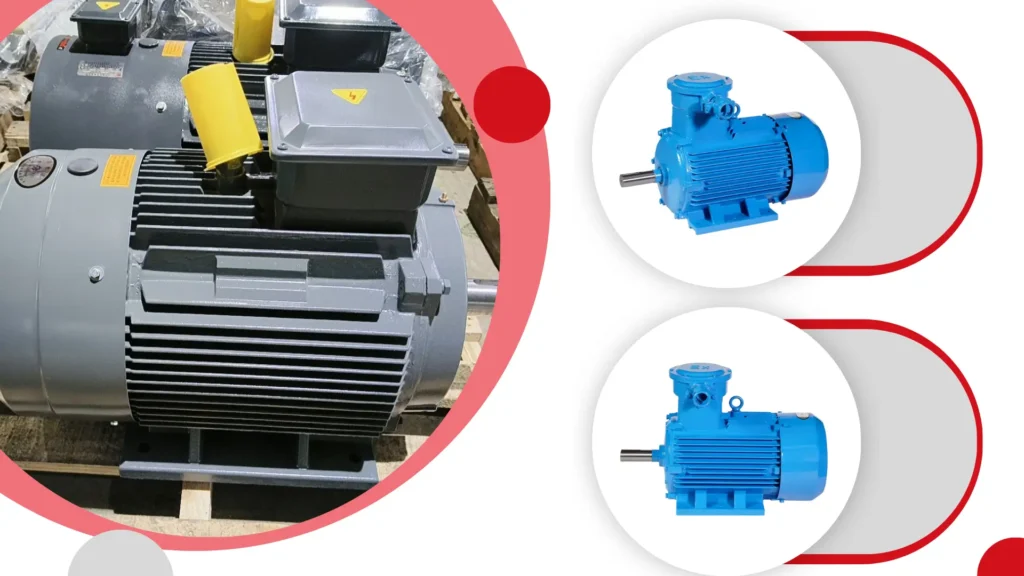
Extended Equipment Lifespan
The design and functionality of dual-purpose motors contribute to extending the lifespan of both the motors themselves and the equipment they drive.
By capturing wasted energy and minimizing the strain on power systems, dual-purpose motors reduce mechanical stress and thermal buildup, two primary factors that can lead to equipment degradation.
With less heat generation, there is a lowered risk of overheating components, which often leads to premature failures and costly repairs.
Furthermore, by enhancing the overall efficiency of the system, dual-purpose motors ensure that associated equipment operates in optimal conditions, which correlates with longer service lives.
Compliance with Energy Regulations
Many industries face strict energy efficiency regulations aimed at minimizing energy use and promoting sustainable practices.
Dual-purpose motors can significantly help businesses meet these regulatory requirements without compromising performance.
By integrating energy recovery technologies, organizations can enhance their compliance with energy standards, demonstrating a commitment to sustainable practices while maintaining high operational performance.
Compliance not only avoids potential penalties and legal issues but can also unlock opportunities for tax incentives, grants, and rebates that further reward sustainable initiatives.
What Makes Rare Earth PMS Motors Ideal for Energy Recovery?
High Torque and Efficiency
Rare earth permanent magnet synchronous (PMS) motors are celebrated for their exceptional torque density and high efficiency, characteristics that make them particularly suitable for applications where energy recovery is essential.
The unique magnetic properties of rare earth materials, such as neodymium, allow these motors to generate more torque in a smaller package than traditional motors.
This high torque output means that they can handle heavy loads and dynamic applications without effort, making them ideal for systems that require frequent start-stop cycles or rapid acceleration and deceleration.
The efficiency of rare earth PMS motors also ensures that these systems waste minimal energy during operation, which is crucial for applications focusing on energy recovery.
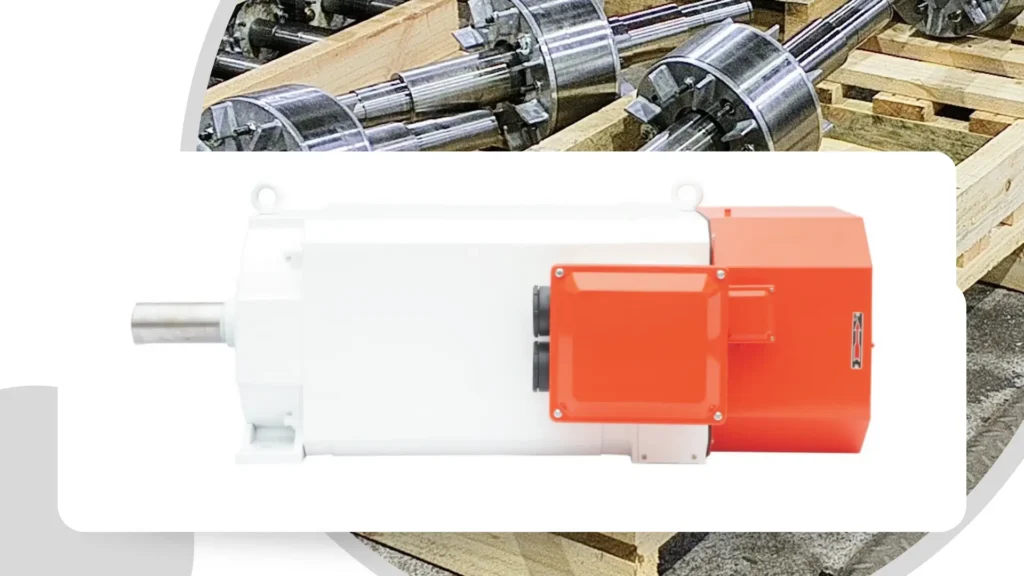
Precise Control and Responsiveness
The control capabilities of rare earth PMS motors are another key factor that enhances their energy recovery potential.
These motors can operate with high precision due to their ability to synchronize with the supply current, allowing for incredibly smooth transitions between different operational phases.
This precise control means that during deceleration, the motor can effectively manage the energy recovery process without significant energy losses.
By optimizing the timing and intensity of energy capture, PMS motors maximize the amount of kinetic energy converted back into electrical energy, ensuring an efficient energy recovery process.
Compact and Lightweight Design
The compact and lightweight design of rare earth PMS motors makes them exceptionally suitable for integration into energy recovery systems without significantly increasing the overall weight or size of the application.
This advantage is particularly important in industries like automotive and aerospace, where space and weight constraints are critical considerations.
Smaller motor sizes can facilitate easier installation within confined spaces or enhance the design of hybrid and electric vehicles that prioritize energy efficiency and performance.
Moreover, the reduced weight contributes to improved vehicle dynamics and fuel efficiency, leading to additional energy savings over the motor’s lifecycle.
How Does Energy Recovery Work in Dual-Purpose Motors?
Regenerative Braking Mechanism
The regenerative braking mechanism is a pivotal feature of dual-purpose motors, including rare earth PMS motors, that facilitates effective energy recovery.
During braking or deceleration, these motors can switch their operation mode and function as generators.
As the vehicle or equipment slows down, the kinetic energy generated during motion is converted back into electrical energy instead of being wasted as heat.
This process occurs through electromagnetic induction, wherein the rotation of the motor generates a voltage that can be harnessed as electrical energy.

Energy Storage and Reuse
Once energy is recovered during the regenerative braking process, it needs to be stored for later use or immediately reused to maximize efficiency.
The recovered electrical energy can be directed into energy storage systems, such as batteries or capacitors, where it can be kept for future needs.
This stored energy can then be utilized during peak demands or when other power sources are unavailable, effectively reducing the reliance on grid electricity and minimizing energy costs.
In addition to storage, the recovered energy can be directly repurposed to power other equipment within the system, such as auxiliary motors or control systems, further decreasing overall energy demand.
Integration with Power Management Systems
Advanced power management systems play a crucial role in optimizing the flow of recovered energy from dual-purpose motors.
These systems monitor energy production, distribution, and consumption in real-time, ensuring that the energy captured during the regenerative braking phase is effectively utilized or stored.
By enabling seamless integration with existing power infrastructure, power management systems can intelligently direct recovered energy to where it is most needed, balancing loads and enhancing system reliability.
Additionally, these systems can facilitate communication between the motor, storage devices, and other components, coordinating energy usage to promote maximum efficiency.
What Are the Key Applications of Dual-Purpose Motors?
Electric Vehicles (EVs)
Dual-purpose motors play a crucial role in the electric vehicle (EV) sector by enhancing the range and efficiency of these vehicles through energy recovery capabilities, particularly via regenerative braking.
During braking or deceleration, traditional braking systems convert kinetic energy into heat, which is wasted.
In contrast, dual-purpose motors can capture this energy and convert it back into electrical energy, which can be stored in the vehicle’s battery.
This process not only extends the vehicle’s range by effectively reusing energy that would otherwise be lost but also improves overall energy efficiency throughout the driving cycle.
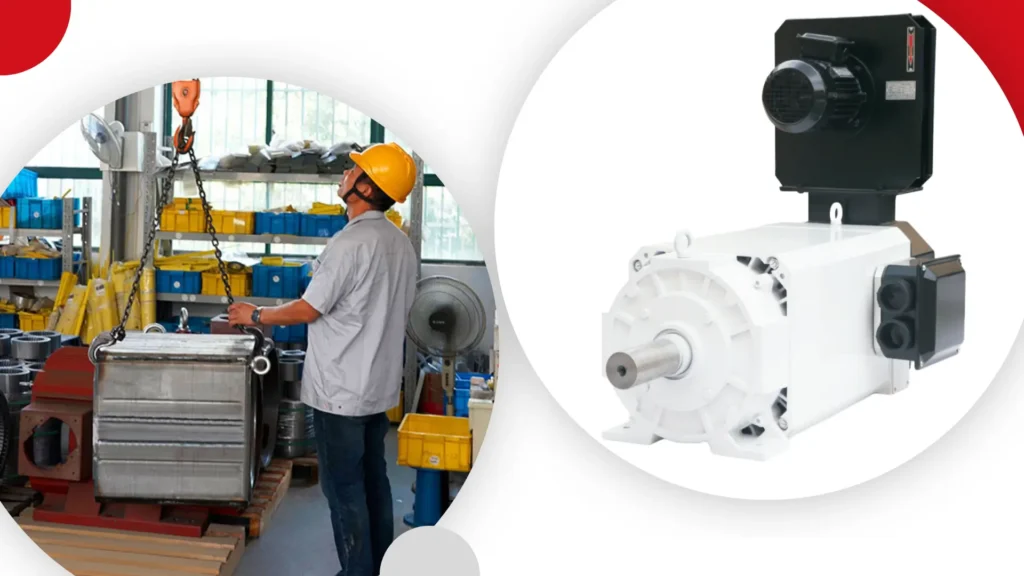
Industrial Machinery
In industrial settings, dual-purpose motors are particularly well-suited for machinery that experiences frequent start-stop cycles, such as cranes, elevators, and conveyor systems.
These machines often operate in applications where energy recovery can yield substantial savings in terms of operational costs and energy consumption.
For instance, in overhead cranes, braking forces that are typically wasted can be captured and reused to power subsequent lifting tasks, improving overall efficiency.
Similarly, conveyor systems can utilize the kinetic energy recovered during deceleration to enhance their performance.
Renewable Energy Systems
Dual-purpose motors can also be effectively integrated into renewable energy systems, such as wind turbines and hydroelectric plants, to capture and store excess energy generated during peak production times.
In wind turbines, for example, dual-purpose motors can help regulate rotor speed and control energy output, converting surplus kinetic energy into electrical energy that can be stored for later use.
Similarly, in hydroelectric systems, these motors can optimize turbine performance by managing hydraulic pressure variations, thereby allowing for more efficient energy generation and storage.
What Should You Look for When Choosing a Dual-Purpose Motor?
Energy Recovery Efficiency
When selecting a dual-purpose motor, one of the most critical factors to consider is its energy recovery efficiency.
This metric indicates how effectively the motor can capture and reuse energy during operational phases, especially during braking.
A motor with high recovery efficiency will translate to significant cost savings and improved sustainability, as it minimizes energy waste and enhances overall operating performance.
To evaluate this characteristic, potential buyers should review empirical data, performance ratings, and user testimonials, ensuring that the motor can meet the specific energy recovery needs of their applications.

Compatibility with Existing Systems
Another vital factor when choosing a dual-purpose motor is its compatibility with existing systems.
It is essential to ensure that the motor can be seamlessly integrated into current setups, including existing power management and control systems.
Assessing compatibility involves examining electrical specifications, communication protocols, mounting dimensions, and control interfaces, ensuring that no additional modifications or expensive retrofits are required.
Compatibility is crucial for maintaining operational efficiency and minimizing implementation costs.
Reliability and Maintenance Requirements
Reliability and maintenance requirements are also key considerations when selecting a dual-purpose motor.
A reliable motor with a proven track record can significantly reduce the chances of unexpected failures, minimizing downtime and protecting operational continuity.
It is advisable to choose motors from reputable manufacturers known for their quality and support services.
Additionally, understanding the maintenance requirements of the motor is essential; motors with lower maintenance needs can enhance operational efficiency by reducing labor costs and extending service intervals.

Conclusion
Dual-purpose motors represent a significant leap forward in motor technology, combining the high performance of rare earth PMS systems with innovative energy recovery capabilities.
By capturing and reusing energy that would otherwise be wasted, these motors offer unparalleled efficiency, cost savings, and sustainability.
Whether you’re in manufacturing, transportation, or renewable energy, dual-purpose motors provide a powerful solution to meet the demands of modern applications.
Embracing this technology not only enhances operational efficiency but also positions your business as a leader in sustainability and innovation.
